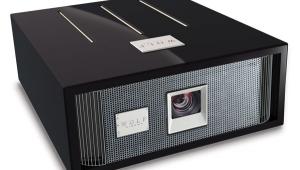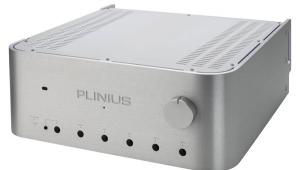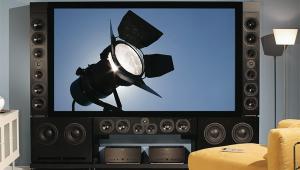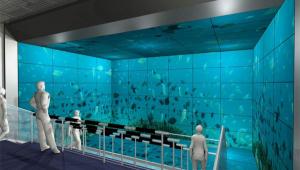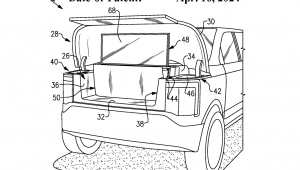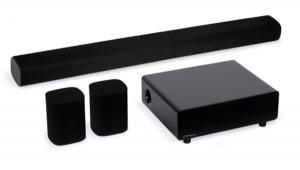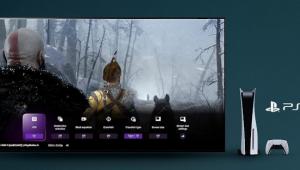I got a demo of these recently in Raleigh NC and they blew me away. Super awesome. Their other equipment is jaw dropping too.
The Phantom Exposed: Devialet Implosive Sound Center
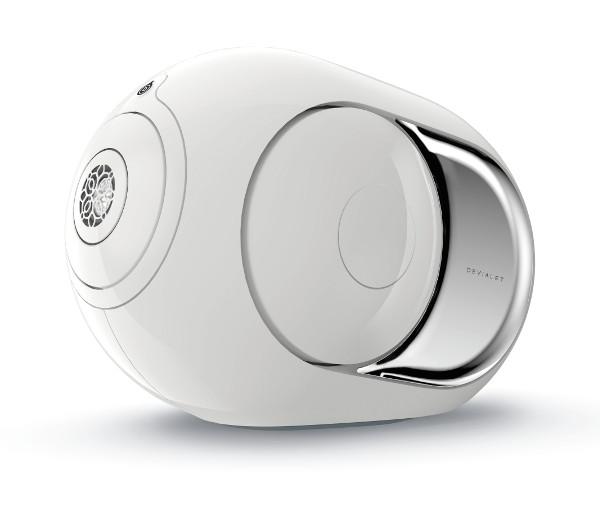
S&V: The Phantom turns traditional speaker design on its ear. How did it come into being and what were the motivating factors behind its creation?
Quentin Sannié: Our motto at Devialet has always been to change lives and bring emotion to people with pure sound. Our Analog Digital Hybrid (ADH) technology and its integration in our Our Expert range of products enabled us to design and develop high-end products for connoisseurs and audiophiles. It also gave us worldwide recognition.
But that was only a first step—we were already thinking about how to expand the technology to a larger audience. We wanted to create the best and most compact sound system in the world, which presented challenges in acoustics, physics, mechanics, and design.
We had to rethink everything and invent a new process to emit sound, which meant challenging the law of physics and pushing the limits to miniaturize our ADH technology. Phantom is the result of 10 years of research and development by 40 of the best engineers in the world.
S&V: Tell me about the unique industrial design.
QS: One of the greatest achievements of Devialet is its people. We have all the expertise in-house—electronic, acoustic, mechanical, design, and marketing—all working together to deliver the best in each domain. Yet we are still a start-up so the teams are limited in number, which creates a real synergy between people and leads to extreme innovation: the best ideas have every chance to be realized. Phantom’s design is the answer to the challenges of price, elegance, performance, and industrial repeatability.
Its unusual shape can be explained by our desire to get as close as possible to the ideal acoustical shape: a spherical speaker. We worked around this requirement to achieve all design demands, inside and outside.
S&V: How do you describe Phantom, which appears to be a rather complex active speaker system?
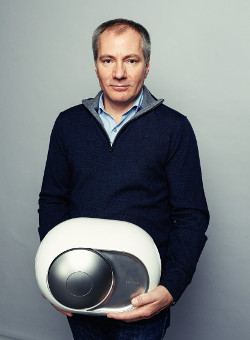 QS: Phantom is a three-way, fully active speaker with a reduced acoustical volume of only 6 liters (0.2 cubic feet), which makes it about one twentieth the size of other speakers delivering the same performance. It uses dual woofers, mounted in a push-push configuration for vibration free sound, to produce bass [down to claimed 16 Hz] and a coaxially arranged midrange driver and tweeter for mid and high frequencies. All the active parts of the loudspeakers are aluminum and the woofers have a convex (as opposed to concave) geometry, which optimizes the moving elements and increases the emission surface. Also, all of the loudspeakers share one power supply but each has its own ADH amplification channel, DAC, and signal processing.
QS: Phantom is a three-way, fully active speaker with a reduced acoustical volume of only 6 liters (0.2 cubic feet), which makes it about one twentieth the size of other speakers delivering the same performance. It uses dual woofers, mounted in a push-push configuration for vibration free sound, to produce bass [down to claimed 16 Hz] and a coaxially arranged midrange driver and tweeter for mid and high frequencies. All the active parts of the loudspeakers are aluminum and the woofers have a convex (as opposed to concave) geometry, which optimizes the moving elements and increases the emission surface. Also, all of the loudspeakers share one power supply but each has its own ADH amplification channel, DAC, and signal processing.
The acoustical center is inside the structure where the axes of the coaxial speaker and woofers intersect. Hence, the speaker is perceived as a point source from a distance of only 1 meter (3.2 feet). All sound waves—from low to high frequencies—seem to be coming from one point, which is what we call the holographic listening experience. It’s simply amazing.
S&V: Okay, so how does Phantom work?
QS: Phantom integrates two miniaturized versions of our ADH technology, which combines the musical precision of an outstanding Class A amplifier with the power of a Class D amplifier without the usual constraints (weight, volume, and heat generation) and sonic compromises. ADH is what gives Phantom its physically impactful sound. Just ahead of the ADH amplification stage is another Devialet technology we call “Magic Wire,” which implements digital to analog conversion at the core of the Class A amplifier to reduce noise and distortion to an absolute minimum.
Phantom also integrates Devialet’s Speaker Active Matching (SAM) technology, which analyzes the characteristics of the drive unit and its acoustic load prior to digital conversion and amplification to control the diaphragm’s movement in a very precise way.
Together, ADH and SAM allow the speaker they are connected to reproduce the exact acoustic pressure desired from the recording.
ADH is the first hybrid amplification technology that combines the precision of analog amplification (Class A) with the power of digital amplification (Class D).
But these technologies were still not enough. We had to face the challenge of how to reproduce the full spectrum of music from such a compact object so we developed the Heart Bass Implosion (HBI) woofer—a high efficiency, long stroke (1 inch peak-to-peak) yet very compact driver. It’s four times more powerful than the best equivalent-size woofers on the market, yet six times more compact and six times lighter. Each woofer can move a mass of more than 30kg (66 pounds).A white paper with specs and more detail on Devialet’s technologies is available here.
S&V: What is the practical benefit of the hybrid Class A/Class D ADH amplifier architecture?
QS: ADH is the first hybrid amplification technology that combines the precision of analog amplification (Class A) with the power of digital amplification (Class D). Both types of amplification operate in parallel for radically increased performance. Thanks to the assistance of Class D amplifiers, the Class A amplifier is freed from the task of having to deliver lots of power and its output is more linear. In short, ADH offers the best of both worlds in terms of power, performance, and efficiency.

S&V: Can you describe a typical Phantom setup?
QS: Phantom has been designed to fit all moods and wishes: solo, duo, or multichannel setups. With Devialet’s Dialog hub, you can connect up to 24 Phantoms together in one home. Phantom can be set up wirelessly or with an Ethernet cable if you want a more secure connection. You can send music from a smartphone, computer, or tablet via our Spark application, which integrates all music sources (local, streaming services, etc.) or you can connect your device directly via an optical cable.
S&V: Are the Dialog hub and Spark application necessary for operation?
QS: No. Devialet's Spark application combines music from all your sources and allows you to control and play music on your Phantom all together or individually, via Wi-Fi from your computer, smartphone or tablet. Dialog gives you access to the best online music services (Deezer, Qobuz, Tidal, and many more to come) and enables you to connect and synchronize two or more Phantoms.
With Spark and Dialog, the options are limitless. Music from all of your sources is combined in one application along with music from friends who are connected to the same Wi-Fi network so you can shuffle from one song to another or from one room to another.
S&V: The press information says, “Once installed at home, Phantom will upgrade constantly…” Can you explain?
QS: We are against planned obsolescence, which is why each and every one of our products is built on our EVO platform through which they evolve and are updated constantly. Regular software updates are made via the Spark application.
S&V: What is the difference between the Phantom and Silver Phantom?
QS: The difference is in their technical specifications or, more precisely, the power and the sound-pressure levels each can achieve. The Phantom delivers 750 watts (peak) and can achieve 99 dB SPL (at 1 meter), which is already impressive. The Silver Phantom delivers 3,000 watts and up to 105 dB SPL. It’s a beast.
S&V: How and where is the Phantom sold in the U.S. and what is the pricing for both models?
QS: Phantom will be available in the summer (2015) and sold on our website, in our company-owned store in New York City, and in approximately 50 high-end shops around the country. Phantom is $1,990 and Silver Phantom is $2,390.
Devialet • en.devialet.com
- Log in or register to post comments


Actually it's Devialet's Integrated Amps that are setting impossibly new high standards.. Run a review on those..






